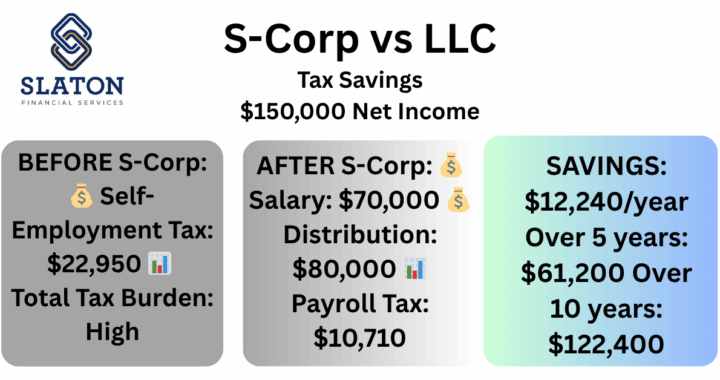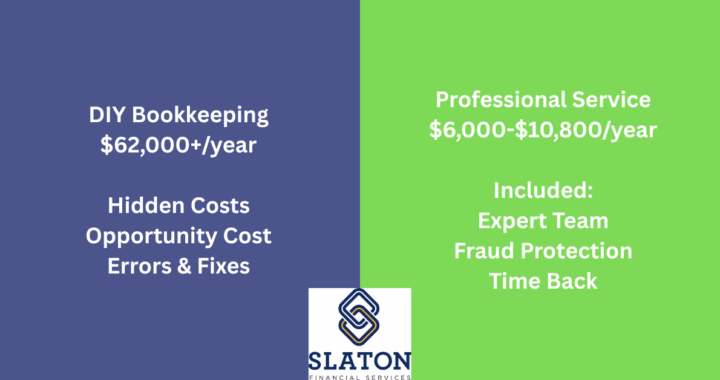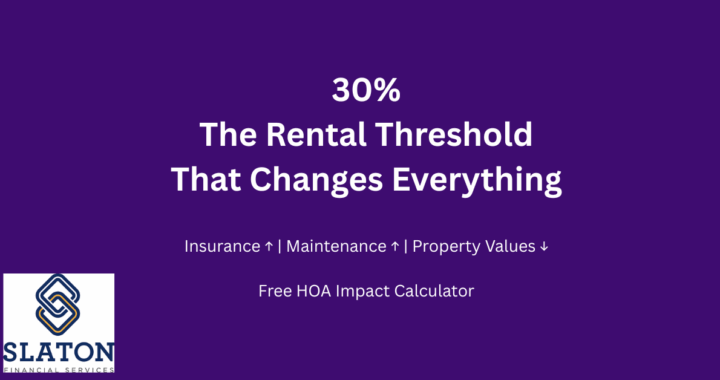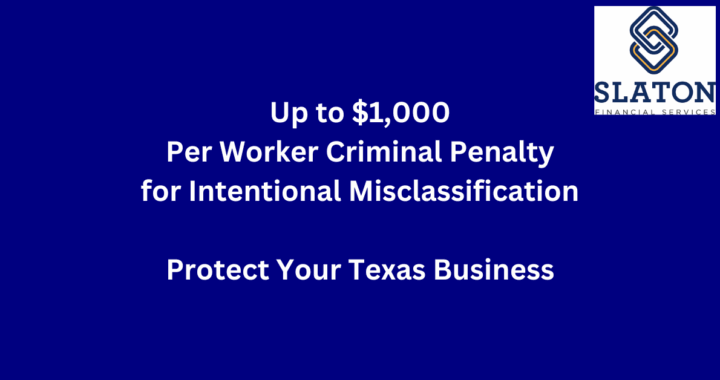The morning started like any other Tuesday for the board members of a mid-sized Texas homeowners association. Then came the call from their bank—their reserve account, which should have contained over $200,000 earmarked for roof replacements, showed a balance of just $3,847.
This nightmare scenario plays out far more frequently than most HOA board members realize. According to recent industry data, the average homeowners association fraud loss stands at a staggering $154,000, with 25% of fraud cases resulting in losses exceeding $1 million. Perhaps most alarming: it takes an average of 18 months to detect these schemes, giving fraudsters ample time to drain community funds while homeowners remain completely unaware.
For Texas HOA boards managing millions of dollars in annual assessments and reserve funds, understanding fraud prevention isn’t just good governance—it’s an essential fiduciary responsibility that can mean the difference between a thriving community and financial devastation.
The Sobering Reality of HOA Fraud in America
Before diving into prevention strategies, Texas board members need to understand the scope and severity of the threat they face. HOA fraud isn’t an abstract risk or rare occurrence—it’s a widespread problem affecting communities nationwide, with financial consequences that can take years or even decades to overcome.
Recent High-Profile Cases Demonstrate the Threat
Consider these recent cases that made national headlines:
The Utah Treasurer Scheme ($230,000): In one Utah community, a trusted HOA treasurer systematically embezzled $230,000 over several years. The fraud involved creating fictitious vendors, submitting false invoices, and writing checks to themselves disguised as legitimate community expenses. The scheme only unraveled when a new board member questioned unusual payment patterns during a routine financial review.
Colorado HOA Embezzlement ($183,000): A Colorado homeowners association discovered that their property manager had stolen $183,000 through a combination of duplicate payments, inflated invoices from vendor accomplices, and direct transfers to personal accounts. The fraud continued for nearly two years before suspicious board members demanded a forensic audit.
Utah Management Company Fraud ($1.9 Million): In perhaps the most shocking recent case, a Utah property management company defrauded multiple HOAs under their oversight of a combined $1.9 million. The elaborate scheme involved creating shell companies, manipulating accounting records, and exploiting the trust placed in them by dozens of communities. Multiple HOA boards had no idea they were being systematically robbed until federal investigators uncovered the operation.
These cases share common characteristics: trusted individuals with access to funds, inadequate oversight mechanisms, and boards that unknowingly created opportunities for fraud through lax financial controls.
Why Texas HOAs Are Particularly Vulnerable
Texas homeowners associations face unique vulnerabilities that make them attractive targets for fraudsters:
Rapid Community Growth: Texas leads the nation in new housing development, with thousands of new HOA communities established annually. These newer associations often lack the mature financial controls and experienced board members that provide protection against fraud.
High Reserve Balances: Texas HOAs managing large communities with extensive amenities often maintain reserve accounts containing hundreds of thousands or even millions of dollars. These substantial balances present tempting targets for those inclined toward financial misconduct.
Volunteer Board Structure: Like HOAs nationwide, Texas communities rely on volunteer board members who typically lack professional accounting expertise and may serve only a few years before rotating off. This creates knowledge gaps and inconsistent oversight that fraudsters can exploit.
Property Management Dependence: Many Texas HOAs delegate day-to-day financial operations to property management companies, creating a natural separation between those who approve expenditures (the board) and those who execute them (the manager). Without proper controls, this separation can become a vulnerability.
Complex Financial Operations: Larger Texas HOAs operate with budgets rivaling small businesses, managing everything from landscaping contracts to pool maintenance to legal fees. This complexity can make it difficult for volunteer boards to spot irregularities among hundreds of monthly transactions.
Understanding the Fraud Triangle: Why HOA Fraud Happens
Fraud researchers have identified three elements that must be present for financial misconduct to occur, commonly known as the “Fraud Triangle”:
1. Opportunity
Opportunity exists when an individual has access to assets and believes they can take them without being caught. In HOA settings, opportunity typically arises from:
- Lack of segregation of duties (one person handling too many financial functions)
- Absent or ineffective oversight by the board
- Poor or nonexistent internal controls
- Insufficient reconciliation procedures
- Boards that “rubber stamp” financial reports without meaningful review
2. Rationalization
Fraudsters rarely see themselves as criminals. Instead, they rationalize their behavior through thoughts like:
- “I’m just borrowing it; I’ll pay it back”
- “The HOA has plenty of money; they won’t miss it”
- “I work so hard for this community; I deserve this”
- “The board doesn’t appreciate everything I do”
- “Everyone does this kind of thing”
3. Pressure
Financial pressure provides the motivation for fraud. Common pressures include:
- Personal debt or financial crisis
- Medical expenses
- Gambling problems
- Substance abuse issues
- Desire to maintain a lifestyle beyond one’s means
Understanding this framework helps explain why HOA fraud often involves trusted, long-serving individuals whom board members would never suspect. The key to prevention is eliminating the opportunity element—even when pressure and rationalization may be present, fraud cannot occur without opportunity.
Red Flags Every Texas HOA Board Should Monitor
Detecting fraud early can dramatically reduce losses. Board members should watch for these warning signs:
Financial Red Flags
Missing or delayed financial reports: A treasurer or manager who consistently misses reporting deadlines or provides incomplete information may be buying time to cover up irregularities.
Reluctance to provide documentation: When requests for invoices, bank statements, or other supporting documents are met with excuses, delays, or defensiveness, investigate further.
Reconciliation discrepancies: Bank balances that don’t match reported amounts, or unexplained reconciliation items that persist month after month.
Unusual payment patterns: Multiple payments to the same vendor in short timeframes, payments just under the amount requiring board approval, or round-number payments (fraudsters often avoid calculations that might reveal discrepancies).
Vendor concentration: An excessive number of payments to one or two vendors, especially if those vendors can’t be easily verified or don’t have a robust online presence.
Deteriorating financial condition: Reserve accounts that aren’t growing as expected, or operating accounts that frequently run low despite adequate assessments.
Behavioral Red Flags
Refusal to take vacation: An individual who never takes time off may be afraid that their absence will allow someone else to discover their fraud.
Control issues: Someone who becomes defensive when others ask to help with financial tasks or insists on being the only person with access to certain accounts or records.
Lifestyle changes: A treasurer or manager who suddenly displays wealth inconsistent with their known income (new car, expensive vacations, luxury purchases).
Isolation of financial information: Creating barriers to information access, such as using personal email for HOA business, refusing to provide passwords, or storing records off-site.
Operational Red Flags
Vendor resistance to board contact: Vendors who refuse to speak directly with board members or who seem uncomfortable answering questions about their services.
Missing cancelled checks or statements: Gaps in documentation or bank statements that arrive opened or show signs of tampering.
Duplicate payments: The same invoice paid twice, or similar invoices with slightly different numbers paid to the same vendor.
Ghost employees or vendors: Payments to individuals who don’t actually provide services to the community.
Comprehensive Fraud Prevention Strategies for Texas HOA Boards
Preventing HOA fraud requires implementing multiple layers of protection. No single control provides complete protection, but together, these strategies create a robust defense:
1. Establish Mandatory Dual Control Over All Financial Functions
The single most important fraud prevention measure is ensuring that no one person has unchecked control over HOA finances.
Implementation steps:
- Require two signatures on all checks over $500 (or a lower amount appropriate for your community)
- Establish dual access requirements for online banking and payment systems
- Separate the duties of authorization, recordkeeping, and reconciliation among different individuals
- Ensure that the person who writes checks doesn’t also reconcile bank statements
- Have someone other than the treasurer receive and open bank statements
Texas-specific consideration: Many Texas HOAs use property management companies that have developed sophisticated segregation-of-duty protocols. However, boards must verify these controls are actually being followed, not simply assume they exist.
2. Implement Monthly Bank Reconciliation with Board Review
Bank reconciliations are your first line of defense against ongoing fraud.
Implementation steps:
- Designate a board member (not the treasurer) to receive bank statements directly from the financial institution
- Ensure reconciliations are completed within 10 days of month-end
- Require the reconciler to review actual cancelled checks or check images, not just bank records
- Present reconciliations to the full board each month with explanations for any unusual items
- Maintain a tickler file for recurring payments to ensure all expected transactions appear on statements
3. Conduct Annual Professional Audits or Reviews
Professional financial examinations provide external validation of your HOA’s financial condition and help detect irregularities that board members might miss.
Options for Texas HOAs:
Full audit: Provides the highest level of assurance but also the highest cost. Recommended for HOAs with annual budgets exceeding $500,000 or significant reserve balances.
Review: Less expensive than an audit while still providing professional oversight. Appropriate for medium-sized communities.
Agreed-upon procedures: The most cost-effective option, where the CPA performs specific testing procedures determined by the board.
Consider engaging professionals like Slaton Forensics who specialize in HOA financial assessments and understand the unique fraud risks facing community associations.
4. Mandate Fidelity Bond Coverage
A fidelity bond (also called crime insurance) protects your HOA against losses from employee or volunteer theft.
Key considerations:
- Coverage amount should equal at least three months of assessments plus 100% of reserve funds
- Ensure the policy covers both employees and volunteers with access to funds
- Verify that property management company employees are covered
- Review coverage annually as your reserves grow
- Understand that bonds protect against losses but don’t prevent fraud—you still need strong controls
5. Establish Clear Financial Policies and Procedures
Written policies remove ambiguity and make it easier to identify when someone deviates from proper procedures.
Essential policies include:
Purchasing policy: Define approval requirements for different expenditure amounts, require competitive bids for large projects, and establish an approved vendor list.
Check signing policy: Specify signature requirements and prohibit signing blank checks under any circumstances.
Credit card policy: If your HOA uses credit cards, establish clear guidelines for authorized purchases, required documentation, and monthly reconciliation procedures.
Reserve fund policy: Define how reserve funds can be accessed, approval requirements for reserve expenditures, and investment guidelines.
Conflict of interest policy: Require disclosure when board members or management have relationships with vendors seeking HOA business.
6. Leverage Technology for Transparency and Control
Modern accounting and banking technology provides powerful fraud prevention capabilities that weren’t available just a few years ago.
Recommended technology controls:
Online banking with board access: Give multiple board members view-only access to bank accounts so they can monitor transactions in real-time.
Cloud-based accounting software: Use platforms like QuickBooks Online, AppFolio, or Buildium that allow board members to access financial records anytime and maintain automatic backup copies.
Positive pay systems: Many banks offer services that match checks presented for payment against a list you provide, preventing altered or fraudulent checks from being cashed.
ACH blocks: Prevent unauthorized electronic withdrawals by establishing blocks that only allow pre-authorized companies to withdraw funds from your accounts.
Transaction alerts: Set up automatic notifications when large transactions occur or when account balances fall below certain thresholds.
7. Verify Vendors and Review Contracts Regularly
Fictitious vendors are a common element in HOA fraud schemes.
Verification procedures:
- Require W-9 forms from all new vendors before issuing any payments
- Independently verify vendor contact information (don’t rely solely on information provided by the person recommending the vendor)
- Periodically call vendors to confirm services were actually provided and amounts billed are accurate
- Review the vendor list quarterly to identify any unfamiliar companies
- Require contracts for all recurring services and review those contracts annually
8. Conduct Surprise Cash Counts and Payment Audits
Announced audits give fraudsters time to cover their tracks. Surprise examinations are more effective.
Implementation approach:
- Conduct unannounced reviews of petty cash at least quarterly
- Randomly select a month and review all payments in detail, verifying supporting documentation and proper authorization
- Have board members occasionally attend vendor meetings or site visits without advance notice
- Surprise examinations send a powerful message to potential fraudsters that oversight is real and unpredictable
9. Provide Fraud Awareness Training
Education is a powerful prevention tool. Ensure all board members understand fraud risks and their oversight responsibilities.
Training topics:
- Common HOA fraud schemes and warning signs
- Board members’ fiduciary duties related to financial oversight
- How to read and interpret financial statements
- Questions to ask when reviewing financial reports
- Red flags that should trigger deeper investigation
10. Establish a Confidential Reporting System
Many fraud cases are uncovered through tips from homeowners, vendors, or employees who notice something suspicious.
Creating an effective reporting system:
- Establish multiple reporting channels (email, phone, written communication)
- Communicate that the board takes fraud allegations seriously
- Protect whistleblowers from retaliation
- Publish the reporting system in newsletters and on your community website
- Follow up on all reports, even those that seem unlikely
What to Do If You Suspect Fraud in Your Texas HOA
Despite best efforts at prevention, if you suspect fraud has occurred, swift and appropriate action is essential:
Immediate Steps
1. Don’t confront the suspect: Premature confrontation often leads to destroyed evidence and can compromise future prosecution.
2. Secure financial records: Take immediate control of all bank statements, cancelled checks, invoices, contracts, and accounting records.
3. Change access credentials: Immediately change all passwords, online banking access, and lock combinations for any accounts or locations the suspect can access.
4. Freeze accounts if necessary: If you believe fraud is ongoing, consider temporarily freezing accounts pending investigation.
5. Document everything: Keep detailed notes of your concerns, including specific transactions, dates, and amounts that raised suspicions.
Engaging Professional Help
Once you’ve taken immediate protective steps, engage appropriate professionals:
Forensic accountant: Professionals specializing in fraud investigation can examine financial records to determine the extent of losses and develop evidence for potential prosecution.
Attorney: Engage counsel experienced in HOA law to advise on notification requirements, potential liability, and recovery options.
Insurance company: Notify your fidelity bond carrier as soon as you have credible evidence of theft.
Law enforcement: File a police report. Financial crimes detectives can pursue criminal charges that may lead to restitution.
Recovery Options
Texas HOAs have several avenues for recovering stolen funds:
Fidelity bond claims: If properly covered, your crime insurance should reimburse losses (subject to deductibles).
Personal assets of the fraudster: You may be able to recover through civil lawsuit, though many fraudsters have spent the stolen money.
Property management company insurance: If a management company employee committed the fraud, their errors and omissions insurance might provide coverage.
Criminal restitution: If criminal charges result in conviction, the court may order the offender to repay stolen funds.
Be realistic about recovery prospects. Even with insurance, deductibles and coverage limits mean you may not recover all losses. Criminal restitution often comes in small monthly payments over many years.
Building a Culture of Transparency and Accountability
Beyond specific controls and procedures, the most fraud-resistant HOAs cultivate a culture where financial transparency is the norm and accountability is expected at every level.
Elements of a strong accountability culture:
Open communication: Regular updates to homeowners about financial condition, major expenditures, and board decisions build trust and make irregularities more noticeable.
Engaged homeowners: Communities where residents pay attention to HOA finances and ask informed questions create natural oversight that deters fraud.
Board member involvement: When all board members actively participate in financial oversight rather than deferring to a treasurer or property manager, fraud becomes much more difficult.
Regular turnover: While institutional knowledge is valuable, periodic board turnover brings fresh eyes to financial operations and prevents any individual from becoming entrenched in a position that enables fraud.
Professional standards: Treating HOA financial management with the same rigor expected in a business setting, rather than as a casual volunteer activity, establishes expectations that deter misconduct.
Conclusion: Vigilance Is Your Best Protection
The $154,000 average loss figure should serve as a wake-up call for every Texas HOA board member. These losses don’t just represent numbers on a financial statement—they represent special assessments levied on already-burdened homeowners, deferred maintenance that threatens property values, and amenities that must be curtailed or eliminated.
The good news is that HOA fraud is highly preventable. The vast majority of fraud schemes succeed only because basic controls are absent. By implementing the strategies outlined in this article—particularly dual control over financial functions, regular independent review of records, and mandatory professional audits—Texas HOA boards can dramatically reduce their fraud risk.
Remember that fraud prevention is not a one-time project but an ongoing commitment. Controls must be consistently applied, not just established and forgotten. Board members must remain engaged with financial oversight even when everything seems fine—especially when everything seems fine, because that’s precisely when fraudsters believe they’re beyond suspicion.
The 18-month average detection time for HOA fraud underscores why prevention is so much more cost-effective than detection. By the time most fraud is discovered, losses have already reached devastating levels. Don’t wait for red flags or suspicious transactions to implement proper controls. Act now to protect your community’s financial assets.
For Texas HOA boards seeking professional guidance on assessing their fraud vulnerability and implementing appropriate safeguards, consider conducting a comprehensive fraud risk assessment with specialists who understand the unique challenges facing community associations. Taking action today can prevent your community from becoming another cautionary tale in the growing catalog of HOA fraud cases.
Your homeowners have entrusted you with their financial contributions and the stewardship of their community. Honor that trust by making fraud prevention a top governance priority. The financial security of your entire community depends on it.



